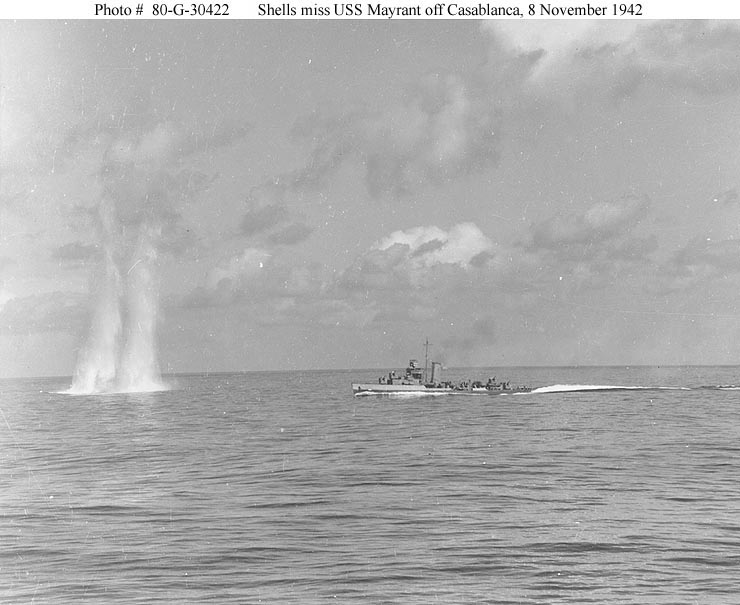On the Sinking of the USS Corry (DD-463)
BELOW: Commentary on how the official loss of ship
report for the USS Corry implies that a salvo of heavy artillery shells would not cause a
strong
concussion effect throughout the ship. The photo below shows
what the explosions from a salvo of heavy artillery shells looks like.

Above photo shows what explosions from 7.6-inch guns look like.
ABOVE: A two-gun salvo of 194-mm shells (7.6-inch) from the El-Hank shore
battery near misses the destroyer USS Mayrant (DD-402) during the Invasion of North Africa -- 8
November 1942. Noting the immense size of the explosions, if this two-gun
salvo had hit the Mayrant amidships in the same manner the Corry
was hit below the water level in the
engineering spaces, easily the Mayrant would have been mortally hit, and
the entire ship would have felt a massive concussion effect.
The USS Mayrant was only a few feet shorter than the Corry.
Like the Corry, it had four 5-inch guns, and was similar tonnage. Its only main difference was
that it had three boilers and one big smokestack, whereas the Corry had
four boilers and two smokestacks. Essentially, the Mayrant and the Corry were the same size destroyer.
NOTE: The two or three heavy shells that hit the Corry on D-Day were
210-mm (8.25-inch) in diameter. They were even bigger (more than 6/10 of an inch) than those
fired at the Mayrant. So noting the immense damage the El Hank battery's
two 194-mm guns would
have done to the Mayrant in the above photo, the Saint Marcouf battery's 210-mm guns
would have done even worse to the Corry on D-Day when at least two 210-mm
shells hit the Corry -- one shell hit the forward fire room and one shell hit the forward engine room,
as reported in initial action reports. Yet the final official report for the
Corry states that the shelling received simultaneously (with a proposed
mine) resulted in "merely incidental damage" to the Corry.
USS Corry DD-463 home page
